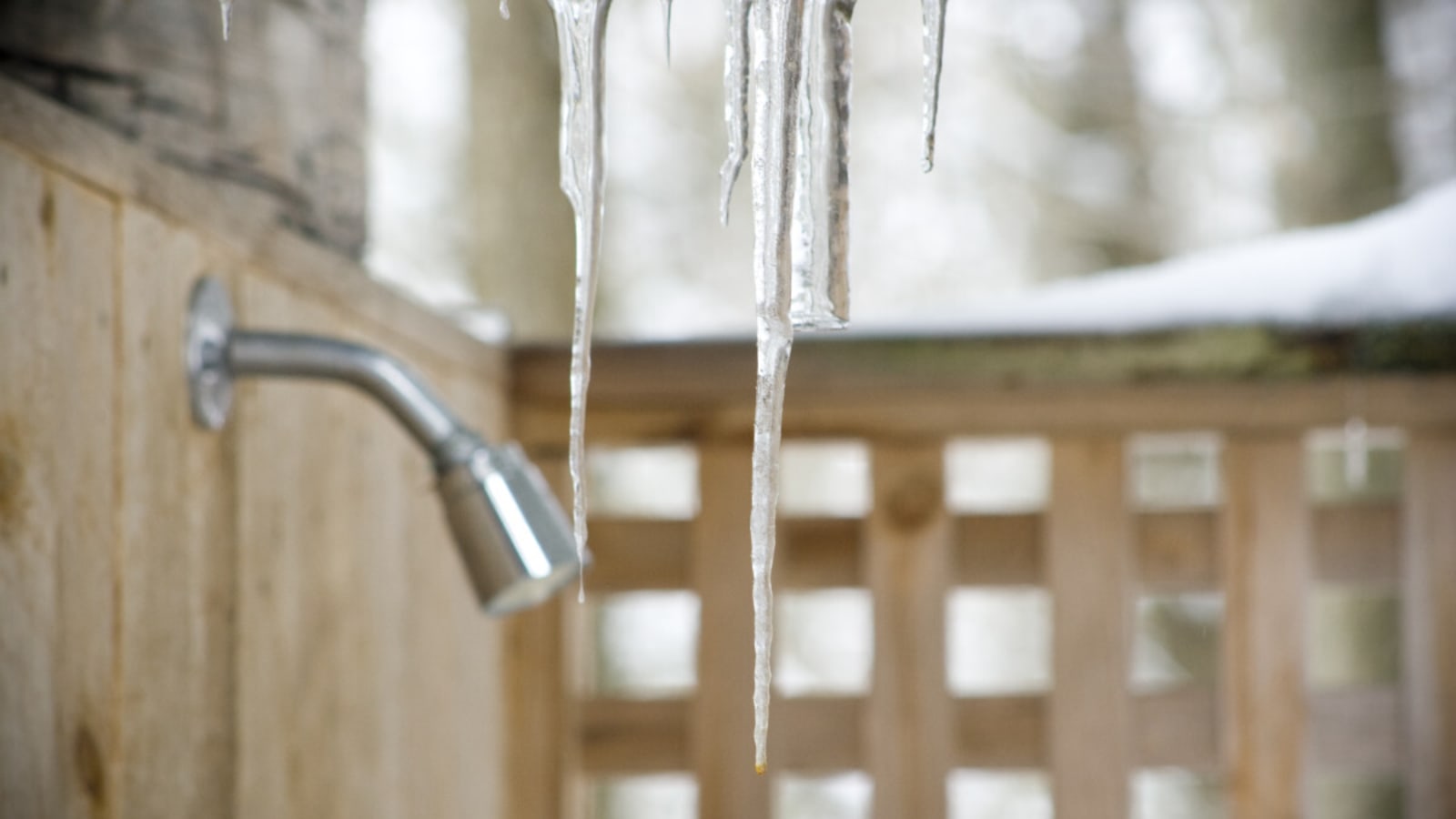
If you live in a region with freezing temperatures, it's time to start thinking about preparing your home and garden for those colder months. You may not be using it right now, but you can not risk forgetting to winterizing your outdoor shower. Failure to do so can lead to expensive repairs like pipes that burst, shower fixtures that crack, and significant water damage. If you live in warmer climates like southern California or Florida, you can skip this step; however, if you experience winter chills, it's best to prepare before the first frost, which is usually in late October or early November.
How late in the season can you use an outdoor shower?
If you’re in a cold climate, you can typically use hoses, fountains and outdoor shower units until late September or early October, depending on when the temperatures start to dip at night. Once freezing nights become more frequent, it’s time to start outdoor winterization. Be cautious once nighttime temperatures start dipping into the 40s (Fahrenheit) or below.
- Expensive plumbing repairs if outdoor shower plumbing freezes or burst pipes
- Damage to the shower head, water faucets, and the various valves from frozen water
- Mold and mildew buildup from trapped water or standing water that can’t escape
- The hassle of fixing leaks or replacing parts when spring returns
How to Winterize Your Outdoor Shower
You'll Need:
- Adjustable wrench or pliers
- Insulating foam or faucet covers and heat tape
- Towels or air compressor
- Pipe antifreeze (optional)
1. Turn Off the Water Supply
- Locate the shut-off valve, typically inside your home, basement, or crawl space.
- Turn off this shutoff valve to cut the water supply that feeds your outdoor shower.
- Test the shower to ensure no more water is running.
2. Drain the Pipes
- Open the ball valve with a 1/4 turn (so the handle is perpendicular to the pipe) and let the water drain.
- Open both hot and cold water lines to fully drain any remaining water.
- Use an air compressor to blow out any additional water for extra protection.
3. Disconnect the Shower Head and Fixtures
- Remove the shower head, hose bibbs, and faucets to prevent cracking or damage.
- Clean these parts thoroughly.
- Store them indoors where they won’t be exposed to harsh winter weather.
4. Insulate Exposed Pipes
- Use insulating foam covers to protect any exposed pipes and shower faucets that can't be removed.
- These foam covers can be easily found at local hardware stores and help prevent heat loss and freezing.
5. Consider Adding Antifreeze
- Pour a small amount of pipe-safe antifreeze into the shower drains for extra protection.
- This ensures any residual water in the system won’t freeze.
6. Cover and Protect
- Use a waterproof shower cover or heavy-duty tarp to cover the entire outdoor shower.
- Ensure the cover is secure to protect it from snow, ice, and moisture.
FAQ
Can I use my outdoor shower all year round?
If you live in a warm climate where temperatures never dip below freezing, you can use a garden shower all year without any problems. However, if you live in a cold region, it's best to winterize any outdoor plumbing that might be vulnerable to freezing temperatures (garden showers, indoor showers of RV/camper showers). Do this by late fall and avoid using it during freezing temperatures to prevent damage.
What happens if I don’t winterize my outdoor shower?
Winterizing an exterior shower is a crucial step to protect against frozen pipes, damaged fixtures, and water leaks. Without doing so, the cold weather can lead to costly repairs and replacements once spring arrives. A few simple extra steps will save you from these headaches.
Is pipe antifreeze necessary for winterizing?
Pipe antifreeze is optional but recommended, especially if you live in an area where deep freezes are common. Proper drainage and insulating the pipes should suffice, but antifreeze does add an extra layer of protection against every last drop of water.
More must-reads:
- Ryan Blaney in championship form as NASCAR playoffs loom
- Vikings upgrade backup for starting QB J.J. McCarthy with latest moves
- The '2024-25 NFL rushing touchdown leaders' quiz
Breaking News
Trending News
Customize Your Newsletter
 +
+
Get the latest news and rumors, customized to your favorite sports and teams. Emailed daily. Always free!








